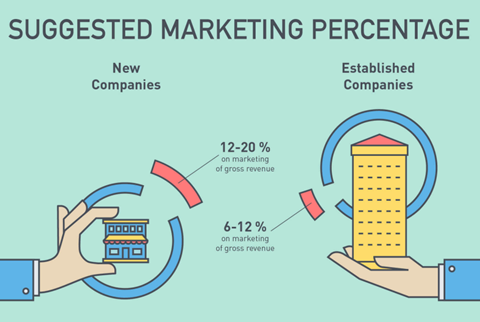SALES & MARKETING
How to Create Effective Marketing Goals for Your Small Business

Marketing is (or should be) an essential part of most businesses, especially small businesses! But knowing how to manage all the different aspects of your marketing strategy can be incredibly challenging - particularly when you haven't established what you want to get out of your activity.
In this blog, we're going to show you how to establish your marketing goals and start working towards them in just three easy steps. Let's get into it...
Step 1: Define your current marketing strengths and weaknesses
As with everything in business, a great place to start when creating your marketing goals is by assessing your current reality I.e., what your strengths and weaknesses are with your current marketing activity. For example, your website might be generating plenty of organic traffic, but you feel like your social media posts aren't getting much engagement. Or perhaps your Facebook activity is working really well but you're not getting many clicks on your newsletter.
Defining your strengths and weaknesses can help you highlight where you need to place your time and effort. We strongly recommend using any insights you have available to back up your own ideas of what is working well and what you need to work on. Metrics or KPIs (key Performance Indicators) can help you to quantify the success of your activity over a certain period of time or show you specific examples of high-performing marketing assets.
Step 2: Set some SMART Goals
Whilst SMART goals hark back to the early days of business creation, the enduring acronym still helps us to create incredibly effective and actionable goals for businesses. Here's how we suggest using it in terms of marketing...
Specific: Make sure your goal refers to a specific area of your marketing strategy and mentions exactly what you would like to happen to it. For example, rather than simply saying, 'I want to do better on social media.' You would say, 'I want to improve the engagement on my Facebook posts'.
Measurable: Starting with a baseline metric is a great way to keep track of how your new marketing efforts are performing. You can keep referring back to your baseline metric on a monthly basis to see what's working and what may need adjusting. A good baseline metric would be something simple taken straight from your insights, for example, 'I would like to see an increase on my existing average of 1,500 engagements a month'
Attainable: You want to make sure that this goal is realistic for your available time and effort and also for your type of business. For example, a small business is unlikely to see a consistent increase of 10,000 average monthly engagements in a short period of time, regardless of your marketing activity.
Relevant: Your marketing goals should reflect where you want to go as a business. For example, if you want to engage a younger audience, you might invest more time in Instagram marketing rather than Facebook, or if you're looking to become a trusted source of information for your customers, you might put more emphasis on your blog posts. Your marketing goals should always be relevant to your wider business goals.
Time-based: Setting a timeframe for your goals is a great way to keep yourself accountable and ensure you're keeping track of your progress. This should also take into account how much time you are realistically able to invest in your marketing. It's also important to think about how long it might take for your new activity to take effect - particularly with social media, it can take real consistency before you see any consistent improvements.
So, an example of an effective SMART marketing goal is: 'I want to increase the average number of engagements on my Facebook posts above my existing baseline of 1.500 engagements per month in the next 3 months'.
Step 3: Consider how you're going to start implementing your goals
Once you've created your marketing goal(s), it's time to start thinking about how you might work towards achieving them. It's important to remember that some goals are easier to achieve than others, and some seem easy on the surface but could actually end up taking up a lot of your time.
It's all about figuring out what activities you could build together to get you closer to achieving your goal. If we use the example of the goal above, about increasing engagements in Facebook posts, that requires you to create more engaging posts - but what does an engaging post look like? That's dependent on your audience!
We recommend revising your metrics to see which types of previous posts have performed well. If that's inconclusive, it's all about trial and error. We've found the posts that work the best for us are ones that;
- Include a face (either a member of our team or our community)
- Have a CTA (call to action)
- Use video content - whether that's an upload or a Live
- Ask a question
And there you have it - that's how you create effective marketing goals for your small business in just three easy steps! We hope these steps help you to gain better clarity on your current marketing strengths and areas that need more attention, and you are now able to create effective marketing goals and can see a way to start achieving them!
If you are stuck on what to post or think you might need some support in content creation, you could consider investing in a marketing package or check out these low-budget marketing ideas here. Learn more about calculating your marketing budget here.








